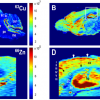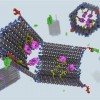Guts against Diabetes
For a very long time I have been using Diabetes as an example of a disorder that is caused by a mutation in the insulin gene. This mutation would stop the cells from making insulin, and a diabetic might need daily insulin injections to regulate their sugar levels properly. I don’t know what took me so long to realize that this was completely wrong. That while some diabetics are insulin dependent, it is because their insulin-producing cells of the pancreas are being completely destroyed by the immune system. And while they still aren’t sure about why these cells are being triggered for destruction, they are making progress towards getting new cells to make the insulin in a completely different region of the body.
Some students I was teaching thought that this might be possible: to engineer the insulin-producing cells with a correctly functioning gene, a type of gene therapy. While this has been a goal for researchers, and they have successfully made insulin-producing cells in the lab from embryonic stem cells, they are not appropriate for transplant because they do not release the insulin in response to glucose levels. Plus, the immune system might still recognize these cells as foreign and destroy them.
So a new study is looking at transforming cells of the gut that don’t have a specific job yet. These cells receive signals throughout the life of an individual to become many different types of cells that are used for normal gut function. So could they engineer these cells to receive the signals to become insulin-producing cells? Also, would the cells only release the insulin in response to blood glucose levels?
Two Columbia University researchers have started finding possible answers to these questions. Once they turned off a gene that normally plays a key role in the fate of a cell, insulin-producing cells were generated. Having cells in the gut that make insulin can be dangerous if they did not release insulin in response to blood glucose levels, but these “new” gut cells have glucose-sensing receptors to allow them to do just that. Another remarkable feature was that the gene could be turned off either early on in development, or later on in adulthood, so it wouldn’t matter how old the patient was.
The next step is to take the research that has been done on mice so far, and see if they can mimic this in humans with the use of a drug or chemical. This method will also need to prove to be safe and more effective than current methods of treatment, not just to avoid the burden of daily injections.
| Print article | This entry was posted by Jennifer Galasso on March 21, 2012 at 4:27 pm, and is filed under Your Genes, Your Health. Follow any responses to this post through RSS 2.0. You can leave a response or trackback from your own site. |








